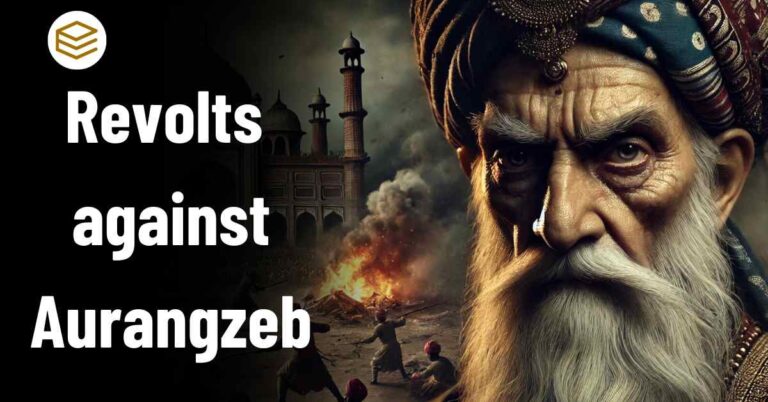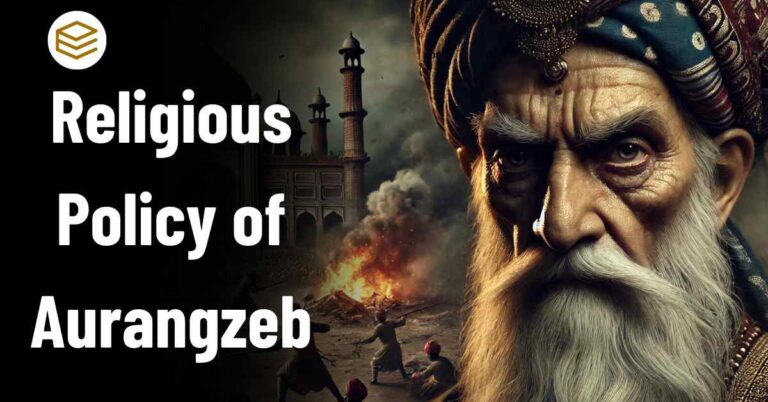December 2, 2025 9:33 am
Chandragupta Maurya (320 BCE – 298 BCE): Rise of the Mauryan Empire
Table of Contents
- 1. Introduction to Chandragupta Maurya’s Background
- 1.1 Classical Greek and Latin Sources on Chandragupta Maurya
- 1.2 Classical Sanskrit Sources on Chandragupta Maurya
- 1.3 Sangam Literature and South Indian Connections
- 2. The Rise of Chandragupta Maurya and the Foundation of the Maurya Dynasty
- 2.1 The Impact of Alexander's Invasion on Chandragupta's Rise
- 2.2 Expansion of the Mauryan Empire
- 2.3 The Conflict with Seleucus I Nicator
- 2.4 Relations with the Greek World
- 3. Chandragupta's Influence in the Deccan and Southern India
- 4. Chandragupta Maurya’s Relationship with Jainism and Karnataka
- Conclusion
1. Introduction to Chandragupta Maurya’s Background
Chandragupta Maurya, the founder of the Maurya Empire, is one of the most significant figures in ancient Indian history. His rise to power and the establishment of the first major empire in India marks a crucial turning point. Although little is known about Chandragupta’s early life, various classical Sanskrit literature, Buddhist sources, and Greek and Latin texts offer some insights into his origins and achievements.
1.1 Classical Greek and Latin Sources on Chandragupta Maurya

In Greek and Latin sources, Chandragupta is referred to as “Sandracottos” or “Andracottus”. One of the most notable accounts comes from Plutarch’s “Parallel Lives”, where it is reported that Chandragupta met Alexander the Great near Takshasila (modern-day Taxila) around 326 BCE. These sources also document his early interactions with the Nanda Empire, portraying Chandragupta’s discontent with the ruling Nandas and his subsequent plans to overthrow them.
Another important historian, Justin, describes Chandragupta’s humble origins and his leadership of a popular uprising against the Nanda dynasty. Chandragupta’s birth is speculated to have taken place around 340 BCE, based on these accounts.
1.2 Classical Sanskrit Sources on Chandragupta Maurya
Sanskrit texts such as the Puranas, Mudrarakshasa, and Parishishtaparvan also refer to Chandragupta’s conflict with the Nanda dynasty. The Mudrarakshasa, a Sanskrit drama by Visakhadatta, narrates the ascent of Chandragupta Maurya to power, along with his association with Chanakya (Kautilya). These texts often describe Chandragupta’s low origins, with terms like “Vrishala” or “Kula-hina”, suggesting that he was not from a traditionally royal lineage. However, some texts also link him to the Nanda family, describing him as “Nandanvaya” or a descendant of the Nandas.
Additionally, the Buddhist text Mahavamsa identifies Chandragupta as a member of a Kshatriya clan, called the Maurya clan, possibly linking him to the Shakya clan of the Buddha. Another significant reference to Chandragupta is found in the 2nd century CE Junagarh inscription of Rudradaman, which attributes the construction of the Sudarshana Lake to his reign.
1.3 Sangam Literature and South Indian Connections
Sangam literature, specifically the poem Akananuru by Mamulanar, refers to Chandragupta’s conquest of the south. These references indicate that the Mauryas played an active role in southern Indian politics, forming alliances with local powers such as the Koshar, and including Deccani troops in their army. The Mauryan influence in the Deccan and southern India during Chandragupta’s reign is also suggested by these sources.
2. The Rise of Chandragupta Maurya and the Foundation of the Maurya Dynasty
Chandragupta Maurya’s rise to power is often credited with ending foreign interference in northwestern India and consolidating power across central and northern India. Both Indian and classical sources agree that he overthrew the last Nanda king, Dhana Nanda, with the guidance and support of Chanakya (Kautilya), taking control of Pataliputra (modern-day Patna) around 321 BCE.
2.1 The Impact of Alexander’s Invasion on Chandragupta’s Rise
The political instability caused by Alexander the Great’s invasion in 326 BCE created opportunities for Chandragupta. After Alexander’s departure, many of the Macedonian governors and satraps stationed in the northwest were assassinated or forced to retreat. Chandragupta took advantage of this power vacuum, gradually consolidating his power and removing the Greek garrisons left behind.
According to the Roman historian Justin, Chandragupta raised a massive army and successfully conquered the northwest and eventually all of India. Chandragupta likely first established his control in the Punjab before moving eastward to Magadha, where he seized control of the Nanda Empire.
2.2 Expansion of the Mauryan Empire
Once in power, Chandragupta Maurya rapidly expanded the Mauryan Empire. Megasthenes, the Greek ambassador to Chandragupta’s court, reported that the Mauryan army comprised around 400,000 soldiers, while Pliny described an even larger force of 600,000 infantry, 30,000 cavalry, and 9,000 war elephants. These vast resources allowed Chandragupta to establish control over a far larger empire than that of his Nanda predecessors.
2.3 The Conflict with Seleucus I Nicator
One of Chandragupta’s major military achievements was his conflict with Seleucus I Nicator, one of Alexander’s generals who ruled over Persia and the eastern territories of Alexander’s empire. In 305 BCE, Chandragupta clashed with Seleucus and emerged victorious, forcing Seleucus to cede eastern Afghanistan, Baluchistan, and areas west of the Indus River. As part of the peace agreement, Seleucus also gave his daughter in marriage to Chandragupta, cementing a political alliance.
The victory over Seleucus laid the territorial foundation for the Mauryan Empire, which now spanned the Indus Valley, Gangetic Plains, and parts of modern-day Afghanistan. Megasthenes was later sent as an ambassador to Chandragupta’s court, followed by Deimachus during the reign of Bindusara, Chandragupta’s son.
2.4 Relations with the Greek World
Chandragupta’s reign saw the exchange of presents and envoys between the Mauryan rulers and various Hellenistic kingdoms, including the Seleucid Empire and Ptolemaic Egypt. The Mauryan state maintained a department dedicated to foreign relations, particularly with Greek (Yavana) and Persian foreigners. Hellenistic influences can also be seen in Mauryan art, with some historians suggesting that Greek artisans contributed to the Pillars of Ashoka and other artistic projects of the Mauryan period.
3. Chandragupta’s Influence in the Deccan and Southern India
Chandragupta’s empire extended beyond northern India into the Deccan Plateau. Greek and Roman sources, including Plutarch and Justin, describe Chandragupta as having conquered the whole of India with a vast army. Scholars suggest that Chandragupta controlled territories in the northwest, Gangetic plains, western India, and even parts of the Deccan. The Junagadh Rock Inscription mentions Pushyagupta, Chandragupta’s viceroy in Saurashtra, who oversaw the construction of the Sudarshana Lake, further indicating the Mauryan presence in western India.
Some medieval epigraphs from Karnataka also reference Chandragupta, suggesting that he extended his control over parts of Karnataka. Sangam texts mention the Moriyar, likely referring to the Mauryas, indicating that Chandragupta or his successors had interactions with southern India, though Tamil Nadu and Kerala remained outside of his empire.
4. Chandragupta Maurya’s Relationship with Jainism and Karnataka
Later Jain traditions link Chandragupta to Jainism and Karnataka. Jain texts describe how Chandragupta, after renouncing his throne, followed the Jain saint Bhadrabahu to Shravana Belgola in Karnataka. It is said that Chandragupta embraced Sallekhana, the Jain practice of fasting unto death, and ended his life as an ascetic.
The strong connection between Chandragupta and Jainism is supported by inscriptions in Shravana Belgola, where his name is associated with Jain religious history. Though the historical accuracy of these traditions is debated, they highlight Chandragupta’s significant legacy in both political and religious history.
Conclusion
Chandragupta Maurya’s reign laid the foundation for one of the greatest empires in Indian history, the Maurya Empire. His military conquests, particularly against the Nanda dynasty and Seleucus I Nicator, his diplomatic relations with the Hellenistic world, and his consolidation of power across India transformed the subcontinent. His legacy continued under his grandson Ashoka, whose reign would see the spread of Buddhism and the further expansion of the Mauryan Empire.





[…] Chandragupta Maurya […]
[…] Chandragupta Maurya […]
[…] Chandragupta Maurya […]
[…] Chandragupta Maurya […]
[…] Chandragupta Maurya […]
[…] Chandragupta Maurya […]